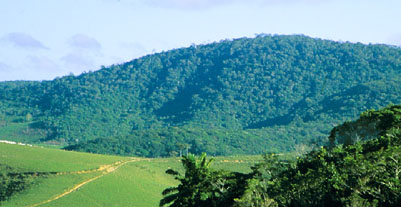
Coastal Forest Plant Diversity in Northeastern Brazil
Wayt Thomas and collaborators
The Atlantic coastal forests of Brazil are considered one of the world’s biodiversity “hotspots.” Within these coastal forests, those in northeastern Brazil (from Bahia to Rio Grande do Norte) are the most biodiverse and the most critically endangered. The goal of this project is to study the vegetation of these northeastern forests and demonstrate that the forests of the southern portion (Bahia) and those of the northern portion (Pernambuco) are not as distinct as previously hypothesized. This will be accomplished by collecting and identifying plant specimens in targeted forest fragments throughout the region and will make it possible to map and predict the distributions of plant species.
Nearly half the plant species found in the Atlantic forests are found nowhere else – many of these are endangered. This research will improve knowledge about the distribution of these species. Data will be provided to appropriate government bodies and local conservation organizations so that decisions about conservation priorities about these can be made wisely. The project leaders will train students, both in the U.S. and in Brazil, who will be involved in the project and learn about botany, ecology and conservation.

The Murici forest, state of Alagoas
More information: The Atlantic Coastal Forest Project of Northeastern Brazil